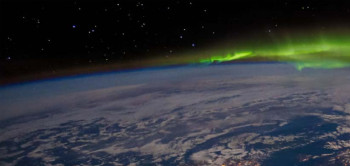You may have heard about the severe geomagnetic storm earlier this week – a coronal mass ejection (an eruption on the sun, expelling plasma at high velocity) that intersected with the Earth, resulting in a plethora of warnings from various global space weather agencies. If this sounds a little bit like science fiction to you, it will be worth brushing up on your space weather knowledge!
 ICAO space weather advisories became part of the aviation information system in late 2019, and as the sun heads towards ‘solar maximum’, you can expect to see more of them over the next few years. The ICAO space weather advisories are provided by the four global ICAO Space Weather Advisory Centres. One is hosted by the US National Weather Service, and the others are consortiums - collaborative efforts by multiple States.
ICAO space weather advisories became part of the aviation information system in late 2019, and as the sun heads towards ‘solar maximum’, you can expect to see more of them over the next few years. The ICAO space weather advisories are provided by the four global ICAO Space Weather Advisory Centres. One is hosted by the US National Weather Service, and the others are consortiums - collaborative efforts by multiple States.
Where the ICAO system differs from other space weather information services is that it is impact-based, focusing on the effects on the aviation system – specifically HF COM, GNSS and radiation, both moderate and severe impacts. It’s worth noting that space weather advisories are only for observed space weather – there is currently no forecast of space weather provided, due to the difficulty in providing accurate forecasts. There are no additional SIGMETs or NOTAMs issued alongside space weather advisories. Currently the advisories are available via PreFlight, MetFlight, MetJet and IFIS as part of a standard briefing package.
In our part of the world, the Australian Bureau of Meteorology is a member of the ACFJ consortium. They also host the Australian Space Weather Forecasting Centre(external link) that provides information for our part of the world, including heads up of possible space weather in the next few days – so it's useful to use in conjunction with the ICAO advisories.
The Bureau have some useful material on space weather and aviation:
For more detailed information, see ICAO Doc 10100 - Manual on Space Weather Information in Support of International Air Navigation(external link), which includes how moderate and severe space weather intensities are defined.
Further material is also hosted on the CAA site:
If you have any questions on space weather and aviation, contact met@caa.govt.nz.